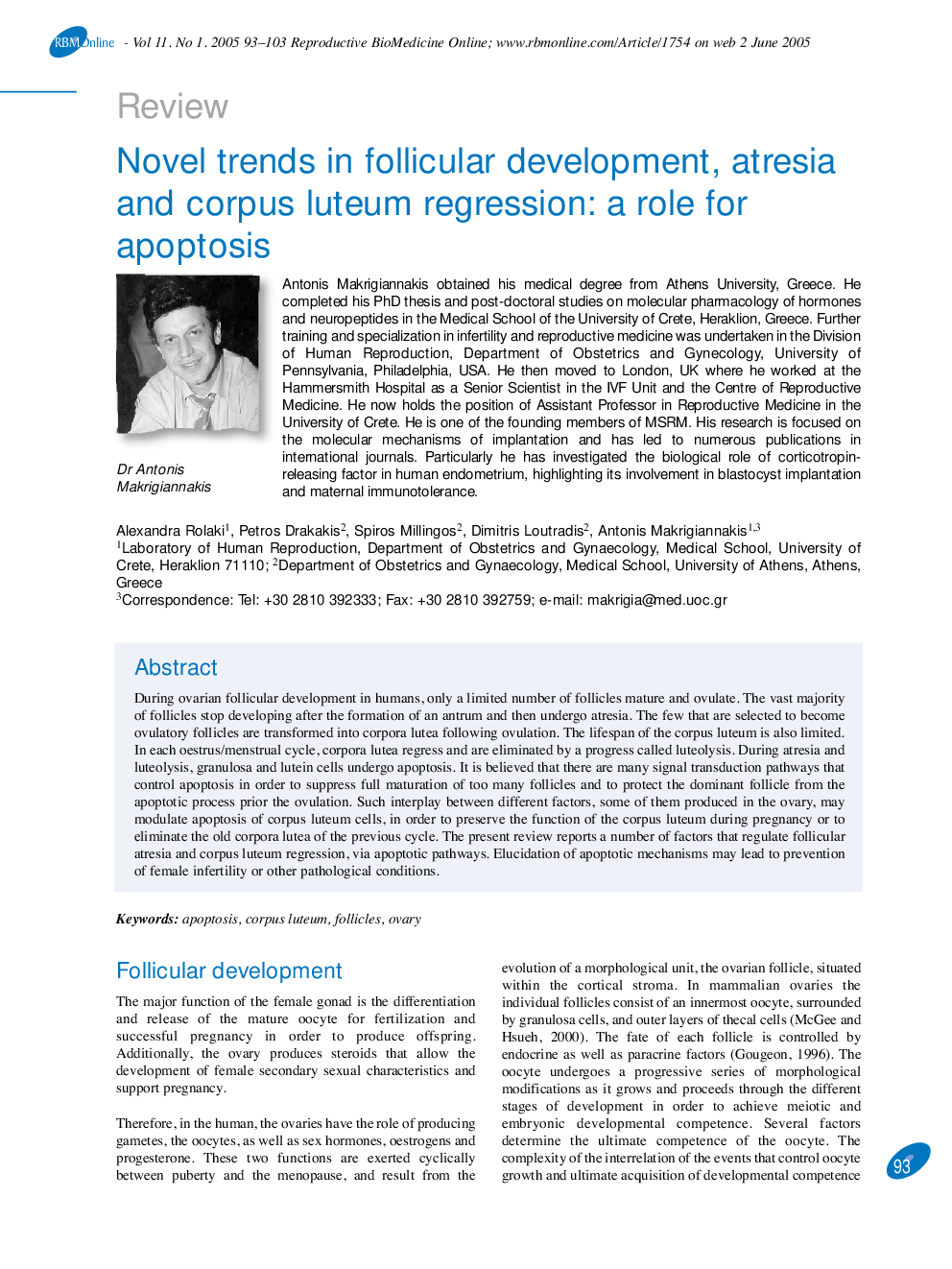| Article ID | Journal | Published Year | Pages | File Type |
|---|---|---|---|---|
| 9335297 | Reproductive BioMedicine Online | 2005 | 11 Pages |
Abstract
During ovarian follicular development in humans, only a limited number of follicles mature and ovulate. The vast majority of follicles stop developing after the formation of an antrum and then undergo atresia. The few that are selected to become ovulatory follicles are transformed into corpora lutea following ovulation. The lifespan of the corpus luteum is also limited. In each oestrus/menstrual cycle, corpora lutea regress and are eliminated by a progress called luteolysis. During atresia and luteolysis, granulosa and lutein cells undergo apoptosis. It is believed that there are many signal transduction pathways that control apoptosis in order to suppress full maturation of too many follicles and to protect the dominant follicle from the apoptotic process prior the ovulation. Such interplay between different factors, some of them produced in the ovary, may modulate apoptosis of corpus luteum cells, in order to preserve the function of the corpus luteum during pregnancy or to eliminate the old corpora lutea of the previous cycle. The present review reports a number of factors that regulate follicular atresia and corpus luteum regression, via apoptotic pathways. Elucidation of apoptotic mechanisms may lead to prevention of female infertility or other pathological conditions.
Keywords
Related Topics
Health Sciences
Medicine and Dentistry
Obstetrics, Gynecology and Women's Health
Authors
Alexandra Rolaki, Petros Drakakis, Spiros Millingos, Dimitris Loutradis, Antonis Makrigiannakis,
